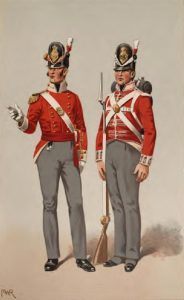
The retreat from Burgos took place in torrential rain towards the end of 1812. It was a miserable end to a year which had seemed spectacularly successful for Wellington’s army. It may have appeared that the Allies had trudged back to the border with their tail between their legs but despite the anti-climatic end to 1812, Wellington established himself beyond all doubt in French minds as a general to be respected. During winter quarters his army rested and recovered and Wellington considered how to improve supplies, discipline and the overall health of his troops. By the start of the new campaigning season he was more than ready for a new advance into Spain with lessons learned and from that one, there would be no retreating.
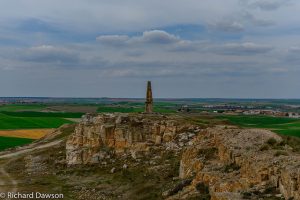
After the bloody storming of Ciudad Rodrigo and Badajoz earlier in the year, Wellington finally met Marshal Marmont on the field of Arapiles outside Salamanca and inflicted a crushing defeat. It was the culmination of weeks of manoeuvring and counter-manoeuvring and it seemed for a time that Wellington would decide not to give battle, but he was quick to spot a weakness in the French line and Marmont’s army was swept aside.
Wellington’s army marched on to Madrid and King Joseph evacuated his capital, leaving the Anglo-Portuguese army to enter as liberators on 12th August. Joseph’s army retreated as far as Valencia. Wellington was hoping that a combination of weather, exhaustion, supply problems and the traditional squabbling and disharmony between leaders would keep the various sections of the French army apart. He relied on the Spanish to keep the French busy in the north while he laid siege to the castle of Burgos.
Wellington was caught off guard by how quickly Clausel was able to rally the defeated French army. The French initially marched on Valladolid causing General Clinton to fall back and the Spanish to abandon the town. Wellington attempted to pursue Clausel but the French fled out of reach. With a wary eye on the various French armies, Wellington left General Hill to defend Madrid with three divisions while he set about reducing Burgos.
Wellington had around 35,000 men and the siege began on 19th September. The defenders were commanded by General Dubreton and consisted of around 2,000 troops. Wellington, however, was seriously short of heavy guns; some historians believe he had only three 18 pounders while others assert that he had more locally captured cannon. He was also short of trained engineers and sappers, many of whom were either killed or wounded during the siege operations.
On the evening of 19th September, Wellington ordered an attempt on the San Miguel hornwork, which guarded the fort’s northeast approach. It was a brave move considering the lack of artillery support but the Allies were able to capture the hornwork although they lost 421 men killed and wounded, to a loss of 138 killed and wounded on the French side. The Allies took 60 prisoners and 7 guns.
Wellington’s engineers began digging in batteries on the hornwork hill. The first of these was finished on 22 September but possibly hoping for another quick success, Wellington ordered an attack on the same night before his guns had had a chance to fire. 400 men from his first and sixth divisions attacked the palisades with axes and then ladders but were easily repulsed to the loss of 150 killed and wounded.
The engineers dug a mine under the fort’s west wall which was detonated in the early hours of 29th September. Once again a British advanced party attempted the breach, but received no support and were driven back. It was realised that the wall was an ancient structure and not part of the main French defences. Wellington set his engineers to dig a new mine and his troops to build a breaching battery but this was immediately destroyed by French artillery. The same thing happened the following day, with both guns and gun crews lost. On 2nd October, Wellington finally sent to Sir Home Popham for more guns to replace them but they were destined not to arrive in time to be of use.
The second mine was fired on 4th October, blowing a gap in the north-west wall and killing a number of the defenders. Wellington’s army attacked once more and managed to secure a tentative position in the outer defences but with the loss of 220 men killed and wounded. The Allied army set about digging a new trench against the inner defences but the French made a surprise attack on 5th October, killing and wounding more than 110 men and removing or destroying most of their equipment. The digging resumed on the following day but the French attacked again on the 8th and Wellington lost another 184 men. It had begun to rain heavily, flooding the trenches and the Allied guns were running out of ammunition. All the time, Wellington was receiving reports of the movements of the French armies and racing against the clock.
Time ran out after another failed assault on 18th October. With another 170 casualties and nothing gained, Wellington was aware that the French army was approaching and he risked being overrun. Reluctantly he abandoned the siege and prepared to retreat, having gained nothing and lost 550 dead, 1550 wounded and three guns.
Marshal Soult had finally connected with King Joseph and had moved towards Madrid with around 61,000 men. In the north, General Souham’s Army of Portugal had around 53,000 men. Wellington had around 73,000 troops, around 35,000 at Burgos, 20,000 at Toledo under General Hill and another 18,000 under General Charles von Alten in Madrid. Wellington had instructed the Spanish general, Ballesteros to stop Soult’s move but Ballesteros was offended that Wellington had been offered the supreme command in Spain and refused to obey. No support came from the 8,000 Anglo-Sicilian troops under Maitland in Alicante on the east coast and Wellington was in a dangerous position, cut off from Hill. The River Tagus, which he had hoped would provide a barrier at this time of year was unusually low. The Allied army was in serious trouble.
Wellington raised the siege on 21st October and slipped away, unnoticed by the French until the following day. Souham followed, and a series of small actions were fought between pursuers and pursued over the following week. On 29th October, the French took the bridge at Tordesillas and Wellington needed to order a full retreat. He sent instructions to Hill to abandon Madrid and join him.
After a skirmish with Soult’s advance guard on 30th, Hill withdrew to Alba de Tormes, and Joseph re-entered Madrid although he was so keen to destroy Wellington’s army that he left immediately without even leaving a garrison. Hill and Wellington joined up near Alba de Tormes on 8th November and on 15th found themselves facing 80,000 men under Soult across the old Salamanca battlefield. On this occasion Soult did not take the bait and Wellington began retreating west later that day.
Supply arrangements for Wellington’s army went badly wrong. The competent quartermaster-general, Murray, had returned to England and his replacement, Willoughby Gordon, lacked his organisational talents and imperturbable efficiency. The Allied troops marched for four days in torrential rain with little or no food. Surprisingly, Soult sent only his cavalry after the Allies but the French took hundreds of prisoners among the stragglers and many men died of hunger or exposure.
The Allied army reached Ciudad Rodrigo on 19th November with around 5,000 men missing. Wellington was back where he had started and it seemed for a time that some of the magic of his reputation had been lost. Wellington himself spent the winter concentrating on what had gone wrong and how it might be righted before the next campaigning season. He was furious at the breakdown of both logistics and discipline during the retreat and he was determined that it should not happen again.
Historians differ about the reasons for some of Wellington’s actions during this campaign but most appear to agree that Wellington made a serious mistake in attempting the siege of Burgos without a proper siege train and enough guns, ammunition and equipment. He himself later suggested that he had made a mistake in leaving his three best and most experienced divisions around Madrid, but it seems doubtful that even the third, fourth and light divisions could have taken Burgos with the means and the time available.
 Rory Muir, in his biography of Wellington, gives the following assessment:
Rory Muir, in his biography of Wellington, gives the following assessment:
“The essential fact is that Wellington should never have left himself so short of means; at the very least he should have summoned a proper siege train as soon as he had reconnoitred the fortress. The combination of lack of foresight and poor judgement was most untypical. The army suffered over 2,000 casualties in the siege, its morale deteriorated greatly and the French armies were left undisturbed to prepare their counter-offensive. It was the worst mistake of Wellington’s military career.”
The fifth book in the Peninsular War Saga, An Untrustworthy Army, tells the story of the battle of Salamanca and the retreat from Madrid and Burgos from the perspective of Paul van Daan and the third brigade of the light division and is due for publication on 30th November on Kindle and at the end of the year in paperback.
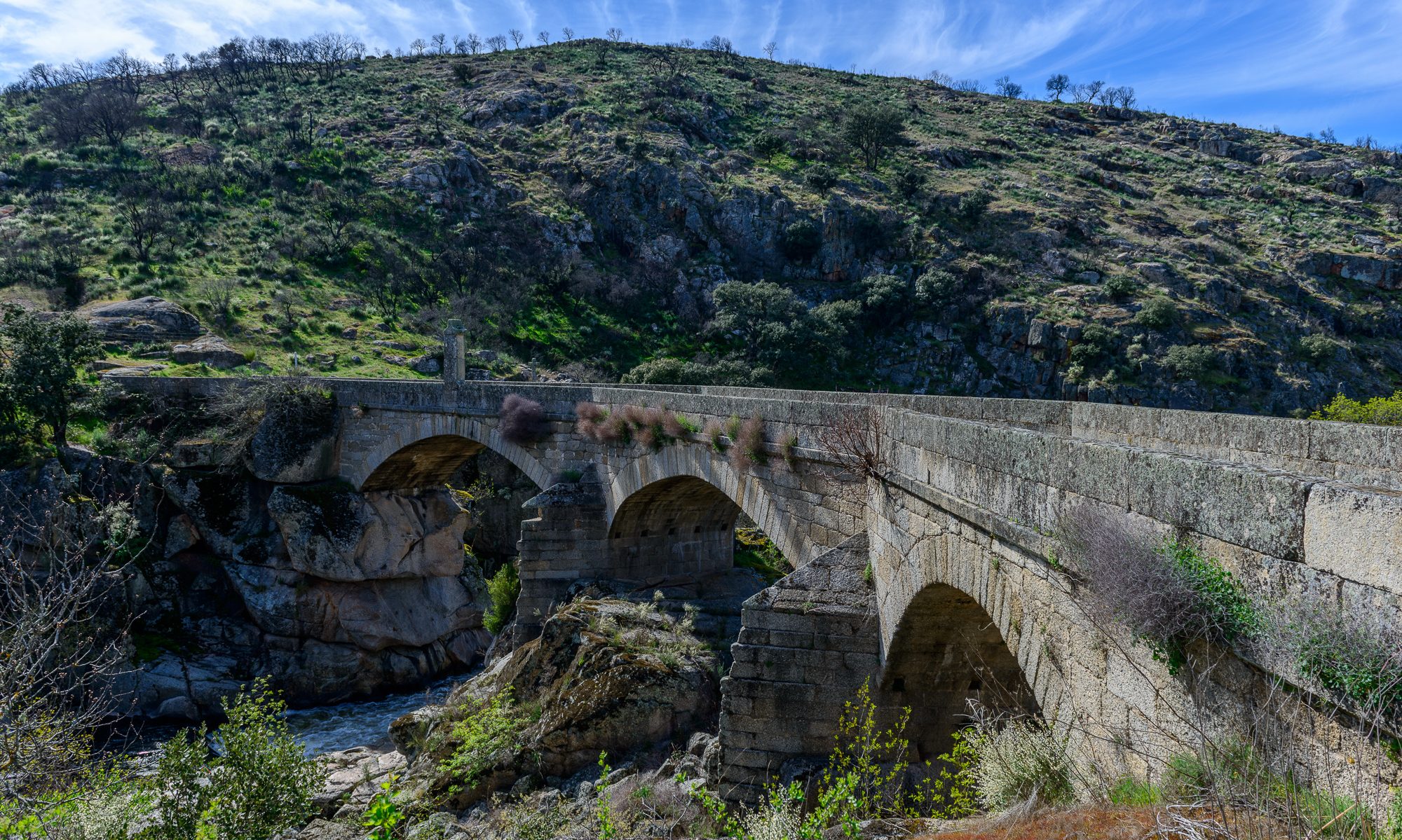


 Welcome to the very first guest blog post from yours truly, Joey the Labrador, senior officer here at Writing with Labradors.
Welcome to the very first guest blog post from yours truly, Joey the Labrador, senior officer here at Writing with Labradors. It’s been more than six weeks since we lost Toby and we’re all getting more used to it, though we’ll never stop missing him. At first I used to forget he was gone and wander around looking for him but I’m over that now. Having Oscar has been the best thing ever, I’m never lonely. He’s always close by, sometimes a bit closer than I need him to be, to be honest. I know I loved old Toby, he was my best mate all my life, but I’m pretty sure I never used to sit on him. Still, although I tell him off from time to time, I secretly quite like Oscar wanting to be that close to me.
It’s been more than six weeks since we lost Toby and we’re all getting more used to it, though we’ll never stop missing him. At first I used to forget he was gone and wander around looking for him but I’m over that now. Having Oscar has been the best thing ever, I’m never lonely. He’s always close by, sometimes a bit closer than I need him to be, to be honest. I know I loved old Toby, he was my best mate all my life, but I’m pretty sure I never used to sit on him. Still, although I tell him off from time to time, I secretly quite like Oscar wanting to be that close to me.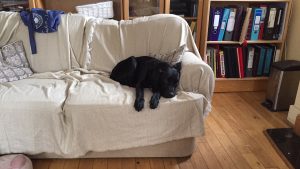 Life goes on and there are always changes. Jon-human has started work now and isn’t around studying all the time so there have been some changes in the study. The big table has gone and we’ve got a very comfy sofa and armchair instead which makes it much more homely. Personally I still like my bed best, just behind her chair, so she has to ask me to move if she wants to get up for a cup of tea, but Oscar loves the sofa and we’re very settled in there all day when she’s writing.
Life goes on and there are always changes. Jon-human has started work now and isn’t around studying all the time so there have been some changes in the study. The big table has gone and we’ve got a very comfy sofa and armchair instead which makes it much more homely. Personally I still like my bed best, just behind her chair, so she has to ask me to move if she wants to get up for a cup of tea, but Oscar loves the sofa and we’re very settled in there all day when she’s writing.  The writing is going very well, apparently. The new book is doing well. It’s my favourite,
The writing is going very well, apparently. The new book is doing well. It’s my favourite,  This is great news as she spoils us rotten and even lets us sleep in her bedroom which is normally off-limits. I particularly like it when she sends photos of this to her mother who can do nothing about it because she’s stuck in a castle in some remote part of Spain gibbering about battlefields. Next month she away at the
This is great news as she spoils us rotten and even lets us sleep in her bedroom which is normally off-limits. I particularly like it when she sends photos of this to her mother who can do nothing about it because she’s stuck in a castle in some remote part of Spain gibbering about battlefields. Next month she away at the  Writing with Labradors is back on track and I think our senior officer would be proud of us. Sitting out on the porch on sunny days, I look at his statue and I’m very glad to have known him. One day Oscar will sit here thinking of me like this, but it’s great to know the tradition is going to carry on through him.
Writing with Labradors is back on track and I think our senior officer would be proud of us. Sitting out on the porch on sunny days, I look at his statue and I’m very glad to have known him. One day Oscar will sit here thinking of me like this, but it’s great to know the tradition is going to carry on through him.

 Next month I am very proud to be a part of the Malvern Festival of Military History which takes place from 5-7 October.
Next month I am very proud to be a part of the Malvern Festival of Military History which takes place from 5-7 October.



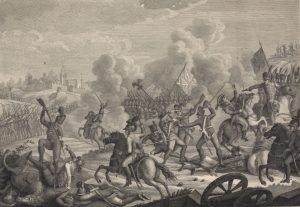 The Battle of Vimeiro took place on this day in 1808 when the British under General Sir Arthur Wellesley defeated the French under Major-General Junot near the village of Vimeiro in Portugal.
The Battle of Vimeiro took place on this day in 1808 when the British under General Sir Arthur Wellesley defeated the French under Major-General Junot near the village of Vimeiro in Portugal.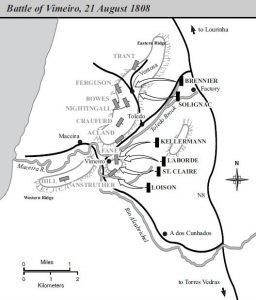 Junot’s first move was to attempt to outflank the British by taking an unoccupied ridge to the north-east of the village. Wellesley’s men held Vimeiro and the western ridge, but he moved quickly to take the ridge ahead of Junot. Junot sent reinforcements to join the battle on the flank but made the decision to launch an attack on the village without waiting to see the outcome of his outflanking manoeuvre.
Junot’s first move was to attempt to outflank the British by taking an unoccupied ridge to the north-east of the village. Wellesley’s men held Vimeiro and the western ridge, but he moved quickly to take the ridge ahead of Junot. Junot sent reinforcements to join the battle on the flank but made the decision to launch an attack on the village without waiting to see the outcome of his outflanking manoeuvre.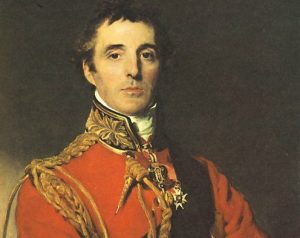
 I’m currently on a week long trip to Northern Ireland: a place of contrasts which leaves the traveller in me overwhelmed by the beauty of the landscape and the historian in me with her head spinning. After only a few days it’s clear to me how appallingly difficult it must be for any historian writing about the turbulent past of this area to find a balance between the stories of the past and the ongoing narrative of the present.
I’m currently on a week long trip to Northern Ireland: a place of contrasts which leaves the traveller in me overwhelmed by the beauty of the landscape and the historian in me with her head spinning. After only a few days it’s clear to me how appallingly difficult it must be for any historian writing about the turbulent past of this area to find a balance between the stories of the past and the ongoing narrative of the present. This trip has changed that for me. Spending time in Belfast and Derry, reading accounts of the confusing relationships between the English, the Scots and the Irish of all persuasions has reminded me that through the centuries this has been so much more than the simplistic explanation of conflict between Protestants and Catholics which was what I remember being told as a child, watching the violence explode across the evening news week after week through the seventies. IRA bombings were a reality of life, coming close to home on more than one occasion, and all I can remember back then was a sense of anger at feeling under threat over a cause that I did not understand and felt was none of my business.
This trip has changed that for me. Spending time in Belfast and Derry, reading accounts of the confusing relationships between the English, the Scots and the Irish of all persuasions has reminded me that through the centuries this has been so much more than the simplistic explanation of conflict between Protestants and Catholics which was what I remember being told as a child, watching the violence explode across the evening news week after week through the seventies. IRA bombings were a reality of life, coming close to home on more than one occasion, and all I can remember back then was a sense of anger at feeling under threat over a cause that I did not understand and felt was none of my business. Yesterday we went for a trip to Derry / Londonderry and visited the
Yesterday we went for a trip to Derry / Londonderry and visited the  Alongside the historical complexity of this region is the stunning beauty of the scenery and that can be appreciated without needing to understand any more. Coming from the Isle of Man, I consider myself a connoisseur of fabulous coastlines and this one is definitely up there with the best. Travelling back on the Lough Foyle ferry yesterday evening into Magilligan was magical.
Alongside the historical complexity of this region is the stunning beauty of the scenery and that can be appreciated without needing to understand any more. Coming from the Isle of Man, I consider myself a connoisseur of fabulous coastlines and this one is definitely up there with the best. Travelling back on the Lough Foyle ferry yesterday evening into Magilligan was magical.

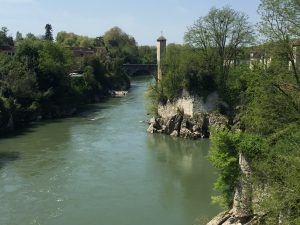 The Battle of Orthez took place on 27 February 1814. After the fierce fighting through the Pyrenees, storms and torrential rain prevented any action for two months.
The Battle of Orthez took place on 27 February 1814. After the fierce fighting through the Pyrenees, storms and torrential rain prevented any action for two months. It was frosty but not frozen on the morning of 27 February, difficult for me to imagine yesterday, exploring the battlefield in soaring temperatures. At 8.30 the 4th division attacked Taupin at St Boes and quickly seized the church. Ross’s brigade swept into the village but were driven back by the battery on the Plassotte knoll. Cole brought up a KGL battery to duel with Taupin’s guns. This immediately became the target of the French batteries on the Plassotte and Luc knolls; two guns were hit and Captain Sympher was killed.
It was frosty but not frozen on the morning of 27 February, difficult for me to imagine yesterday, exploring the battlefield in soaring temperatures. At 8.30 the 4th division attacked Taupin at St Boes and quickly seized the church. Ross’s brigade swept into the village but were driven back by the battery on the Plassotte knoll. Cole brought up a KGL battery to duel with Taupin’s guns. This immediately became the target of the French batteries on the Plassotte and Luc knolls; two guns were hit and Captain Sympher was killed. Orthez is just over thirty miles to the east of Bayonne, a pretty little town on the river Gave de Pau. The original bridge, with its distinctive sentry tower in the centre, is still there and can be seen from the modern bridge. We drove through the town to view Wellington’s deployment area up past the church and then drove up towards Baights de Bearn to see the spurs where Picton’s men would have been deployed to the right of the road.
Orthez is just over thirty miles to the east of Bayonne, a pretty little town on the river Gave de Pau. The original bridge, with its distinctive sentry tower in the centre, is still there and can be seen from the modern bridge. We drove through the town to view Wellington’s deployment area up past the church and then drove up towards Baights de Bearn to see the spurs where Picton’s men would have been deployed to the right of the road.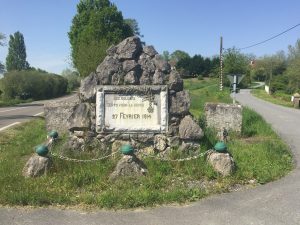 Turning right after St Boes we drove along the ridge held by Soult’s men. The 52nd would have climbed up the gulley to the right to appear between Taupin and Rouget’s division. It doesn’t look like a particularly easy climb and given the time of year it may well have been very boggy. There is a memorial to General Foy’s men on the left-hand side further along the road.
Turning right after St Boes we drove along the ridge held by Soult’s men. The 52nd would have climbed up the gulley to the right to appear between Taupin and Rouget’s division. It doesn’t look like a particularly easy climb and given the time of year it may well have been very boggy. There is a memorial to General Foy’s men on the left-hand side further along the road.



